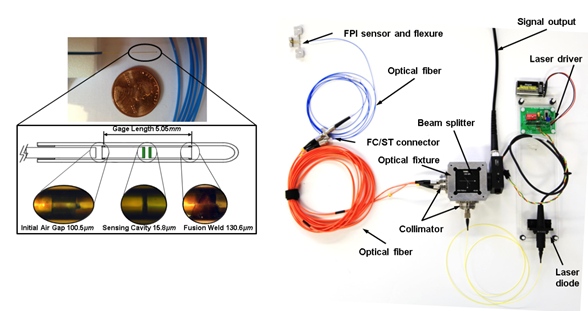Autonomous Control of Assistive Robots via Reinforcement Learning and Imitation Learning
We presented a novel method to rapidly develop exoskeleton controllers to assist multimodal locomotion without relying on lengthy human-involved experiments - one of the grand challenges of wearable robots that have significantly hindered their broad dissemination and adoption. Our reinforcement learning-based method does not require
any human tests or handcrafting of control rules. The learned controller can be directly deployed on a portable exoskeleton which immediately reduces energy consumption during walking, running, and stair climbing, achieving the largest energy saving of humans during three locomotion activities so far recorded in the literature, equivalent to 11.9
kilogram body mass reduction and resulting in athletic performance.
Unlike previous achievements of reinforcement learning that primarily focused on simulation and board games (e.g., AlphaGo), we proposed a new method, namely, data-driven and physics-informed reinforcement learning, to control wearable robots to directly benefit humans.
Our generalizable and easy-to-use method not only works for our robot but can also be applied to a wide variety of assistive devices (e.g., exoskeletons and prostheses) for millions of able-bodied and mobility-impaired individuals.
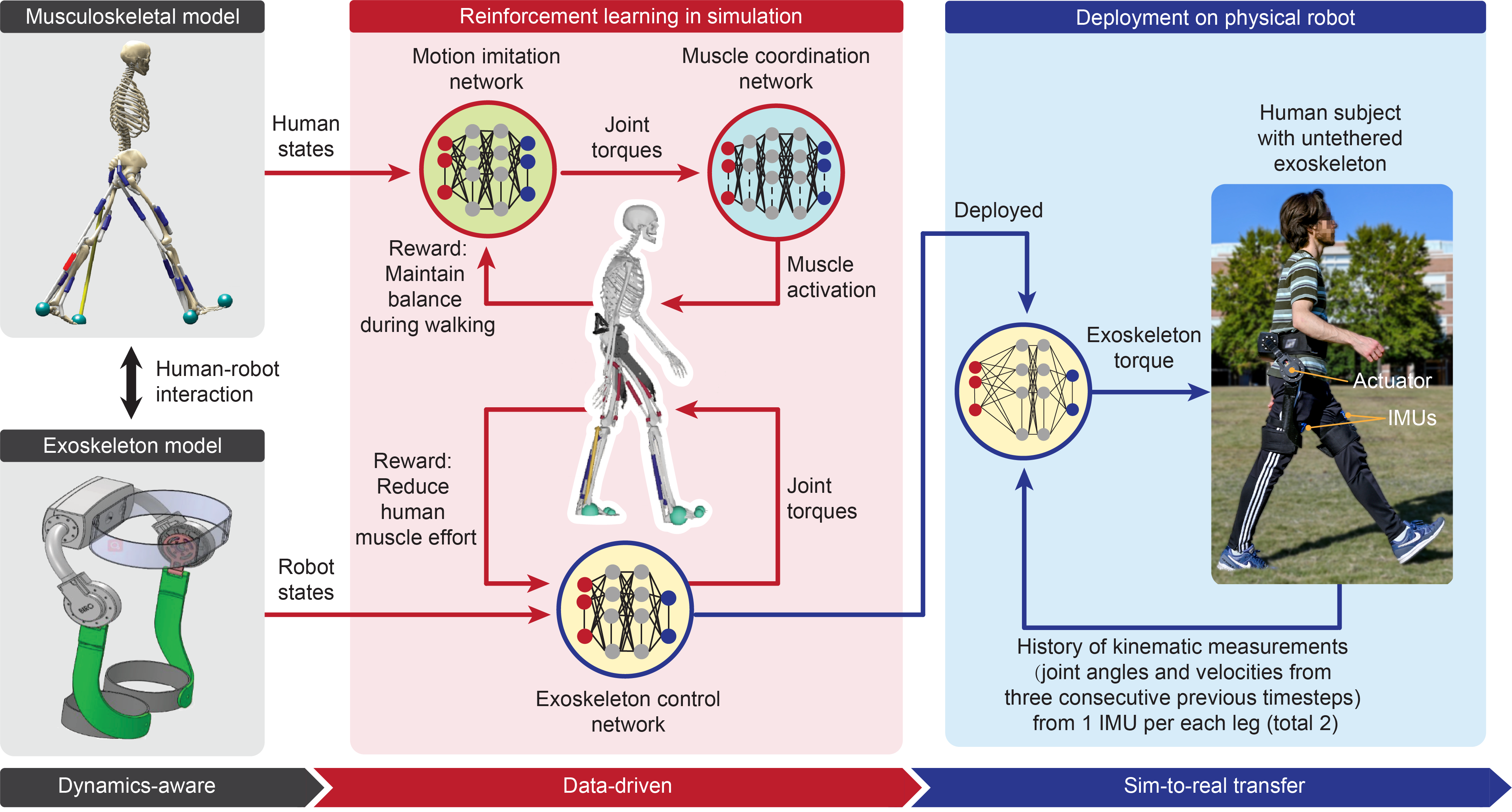
Semi Autonomous Control of Robot-assisted Surgery and Interventions
We designed a novel portable catheter robot that enables simultaneous translation and rotation of versatile instruments for endovascular intervention (i.e., guide catheters, microcatheters, and guidewires) with a compact architecture.
State-of-the-art catheter robots suffer from large footprints that pose physical interferences to clinicians during instrument manipulation in robot-assisted procedures. Moreover, these robots lack versatility in their mechanisms, which limits their compatibility with different diameter endovascular instruments utilized in diverse cardiovascular procedures.
Our novel 4-DoF portable and versatile catheter robot enables precise translation and rotation of off-the-shelf instruments within a compact size (250 mm × 350 mm × 250 mm) that is approximately one-tenth the size of the state-of-the-art catheter robots.
Moreover, our actively adjustable clamping mechanism enables the robot to actuate off-the-shelf instruments with diameters ranging from ∅0.33 mm to ∅3 mm with precise instrument advancement/retraction. The portable and versatile capabilities of the robot enhance its practicality in clinical interventions.
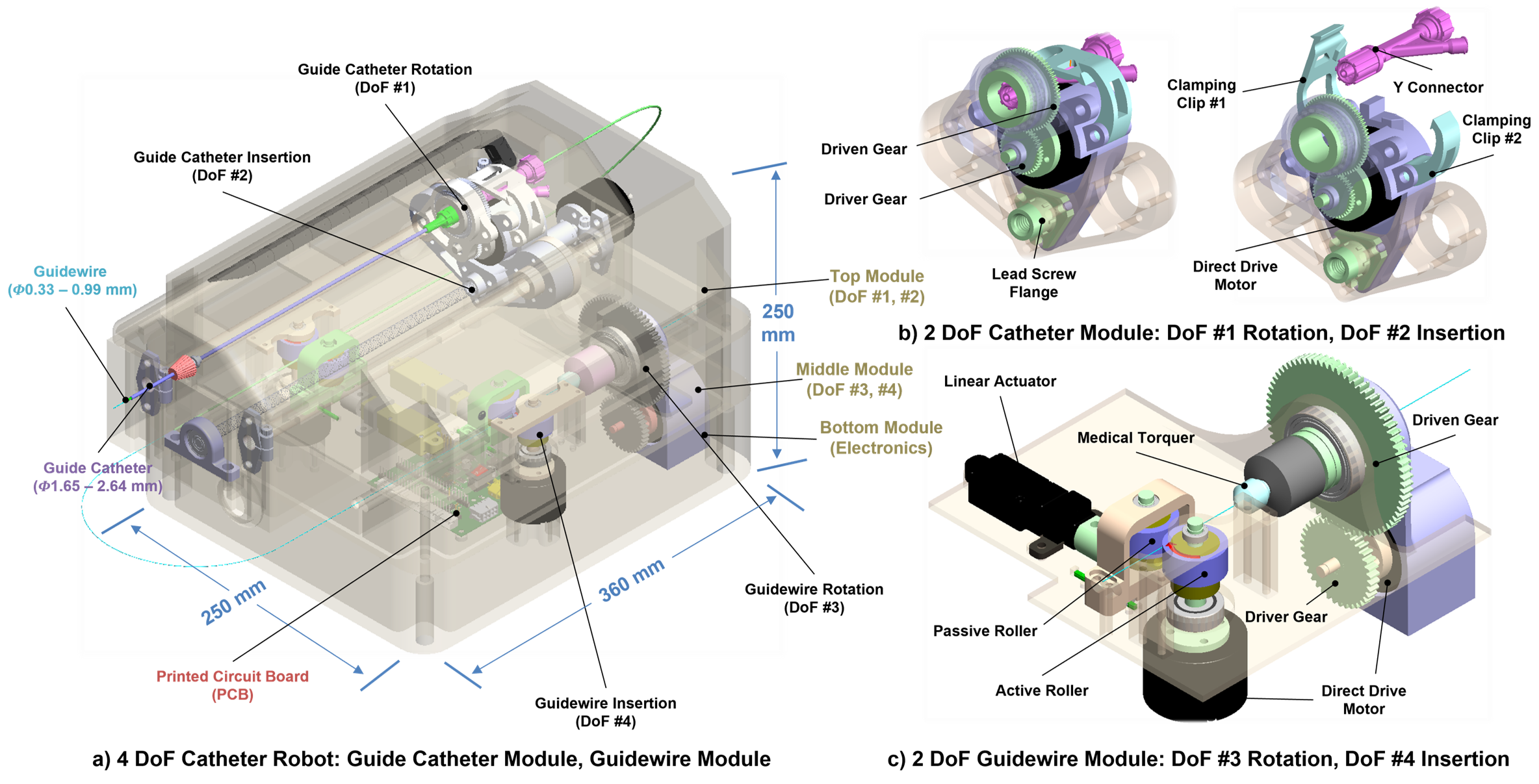
Overview of our 5-DOF catheter robot mechatronics design

Detailed robot design of 2-DOF guide catheters actuation module (upper) and 2-DOF guidewires actuation module (lower)
Soft Exoskeleton for Human Augmentation and Restoration
We are developing both enabling technologies (i.e. high torque density motors and soft fabric sensors) and robotic systems to augment human capability with wearable robots. Soft exoskeleton is a new design methodology that optimizes both comfort and performance of the users. We believe that our lightweight and compliant exoskeleton will be new intervention and rehabilitation solutions for both neurological and musculoskeletal disorders, e.g. osteoarthritis and children with cerebral palsy.
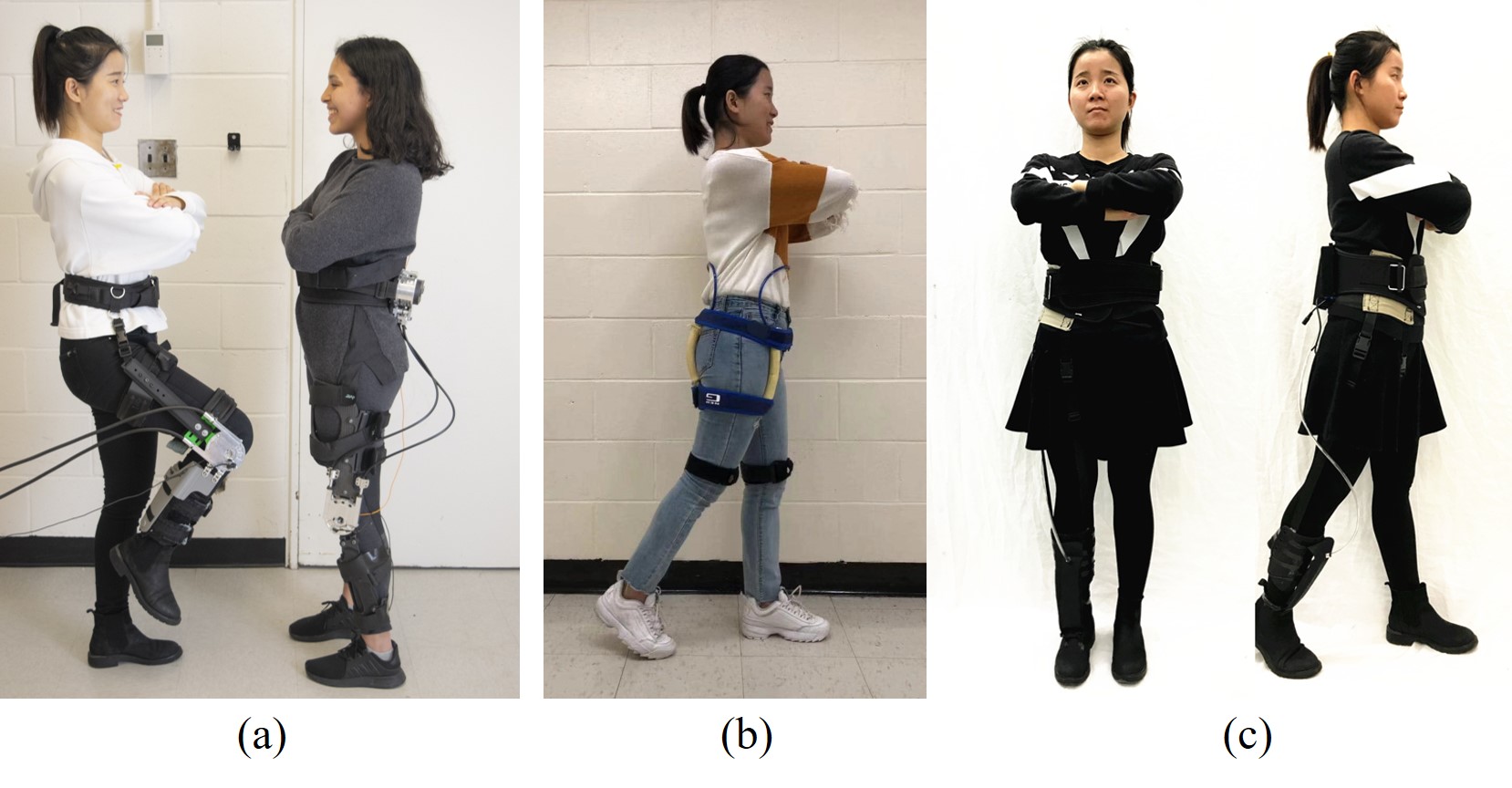
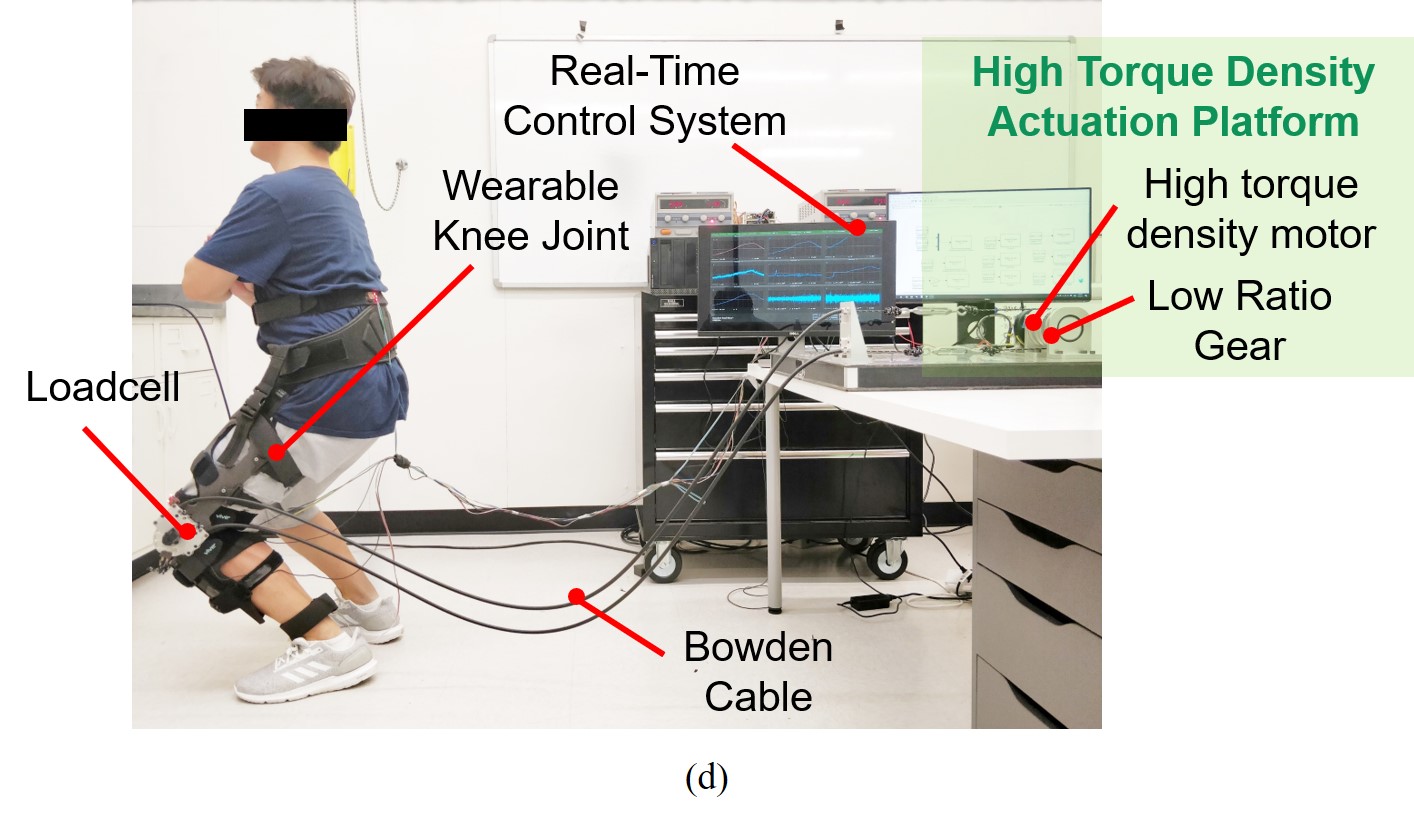
MRI-guided Robot for Neurosurgery and Prostate Biopsy
In collaboration with Harvard Medical School, we have developed three generations of MRI-guided prostate intervention robots in collaboration with Johns Hopkins and Brigham and Women's Hospital. The robotic system, designed to improve prostate cancer biopsies, is being tested as part of a larger clinical trial at BWH. The first generation is a cylidrical needle placement robot, the 2nd generation utilized a concentric tube mechanism to actively steer needles, and the third generation deploys a parallel mechanism for angulated needle placement. Prostate cancer is the last form of cancer still diagnosed with blind needle biopsies, so we are working to change that with image-guided technology.
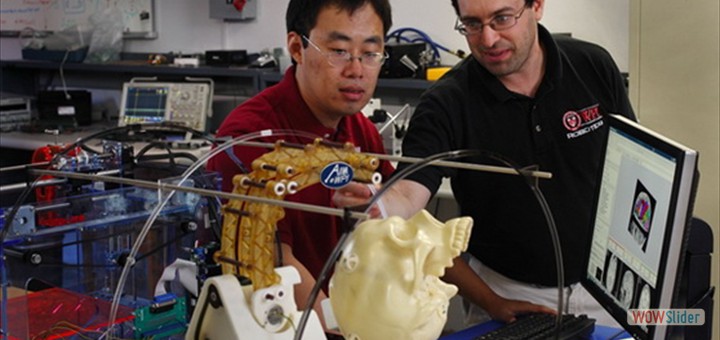
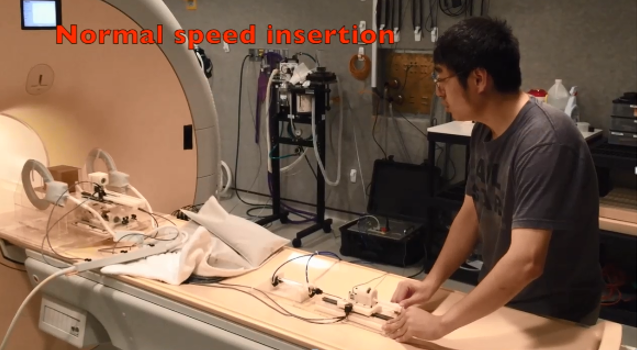
High Performance Electric Motor
High torque density actuator enables a new robot design paradigm - quasi-direct drive, that significantly improves the bandwidth and transparency of co-robots that interact with human or the enviroment. We developed a novel knee exoskeleton combining the advantages of a high torque density motor and a bi-directional cable transmission system. The exoskeleton is lightweight and highly backdrivable. Performance evalutation demonstrates that the torque control bandwidth is up to 30Hz. These characteristics enables safe interaction between users and the exoskeleton.
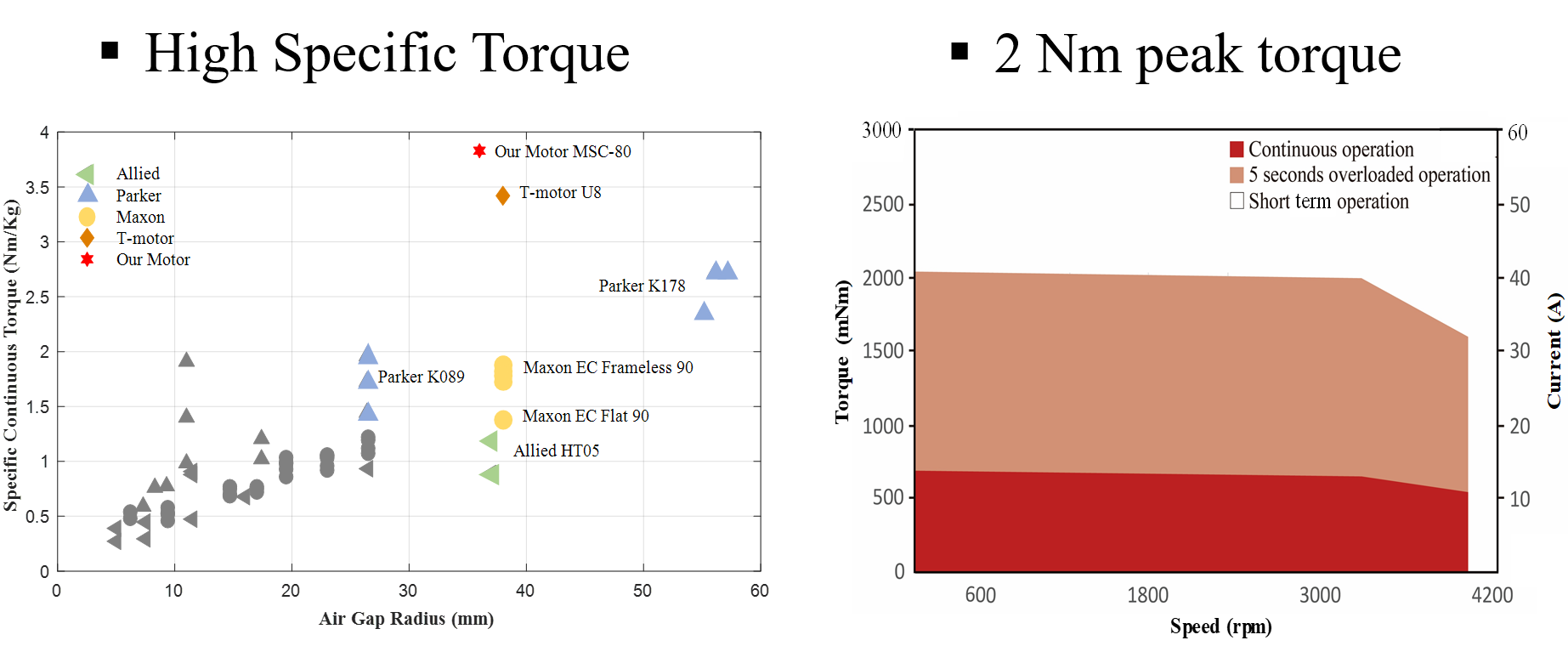
Fabry-Perot Interferometer Fiber Optic Force Sensor
Traditional sensors in robotics include force and positioning sensing. However, off-the-shelf sensors are not suiatable for use in MRI due to the potential for image degradation, malfunction, or safety issues. We are evaluating and developing sensors to be used in the MR environment. The current focus is on optical techniques for force and position sensing that do not compromise image quality and will allow for haptic feedback during MRI-guided interventions.
